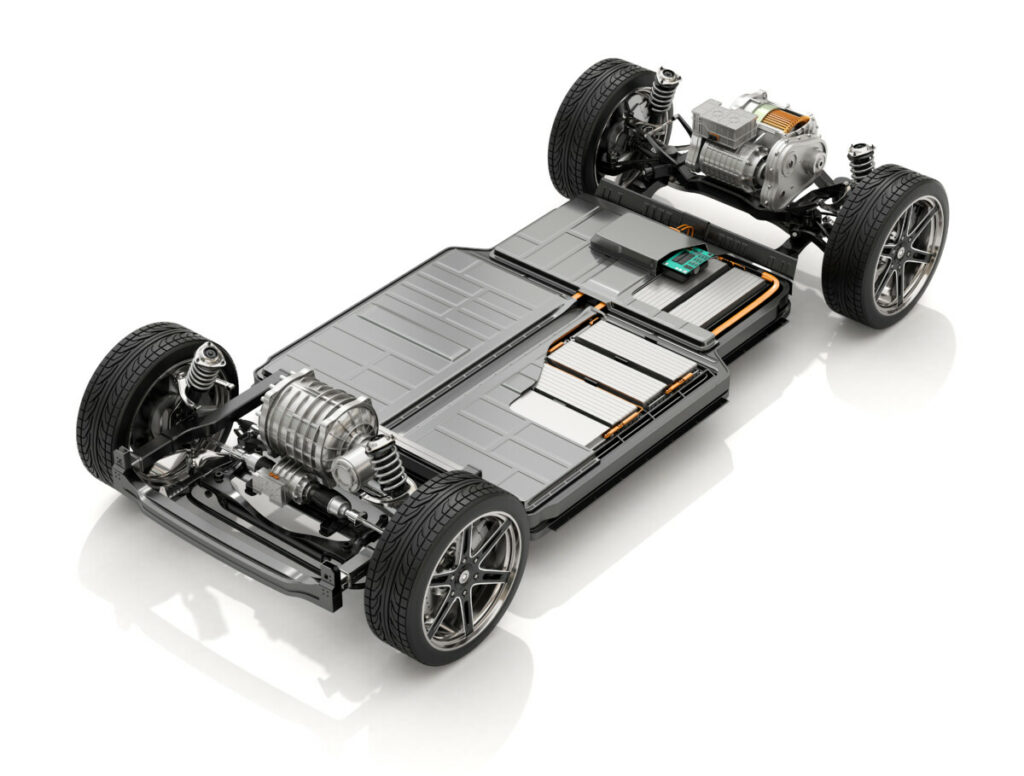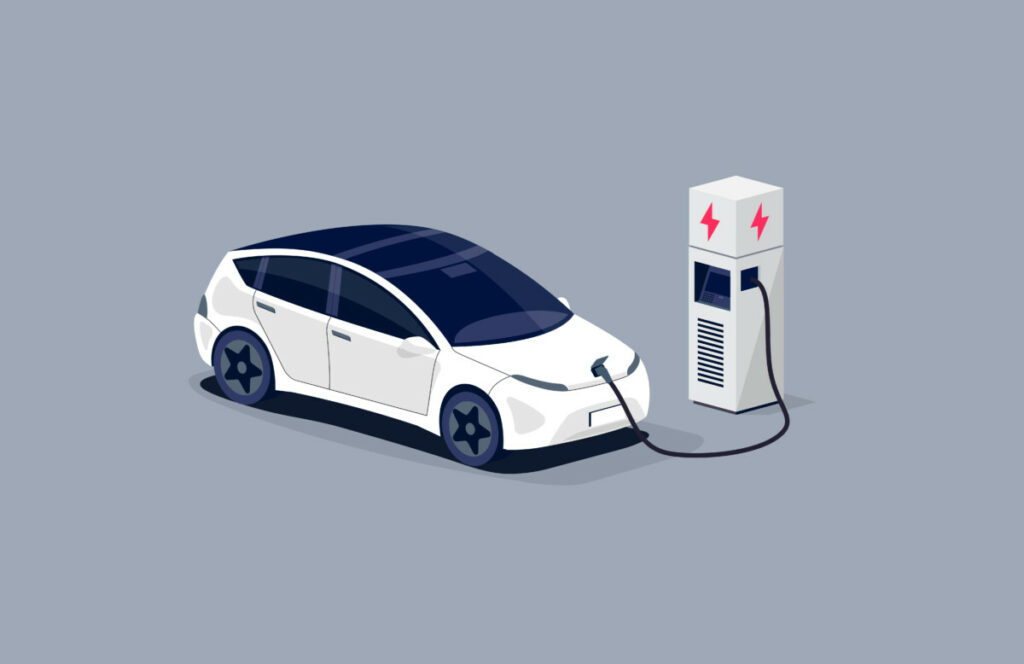
Is your electric car running out of juice more quickly than normal? Or maybe it won’t charge up all the way? Or maybe you just have one lying around; whatever the case, it’s probably time to recycle your battery.
The best way to recycle an electric car battery is to take it to a local auto shop. They have both the training and the tools to get it out of the car, and they have connections with recycling companies. This way, the materials in the recycled batteries can go straight into making new batteries.
Let’s look at why recycling is the best thing to do with a spent battery, how to get your battery recycled, and how you can make your next battery last longer.
Why Recycle an EV Battery?
The materials used to make EV batteries take energy and resources to attain that cause CO2 emissions. This is your EV battery’s carbon footprint, and if those materials are wasted after one battery lifetime, that means that new materials will have to be mined in order to meet the demand, meaning that those CO2 emissions keep coming.
Recycling the battery means that its materials reenter the manufacturing loop. That way, the amount of mining needed to meet demand is reduced because they’re getting the materials back.
The materials required to make a battery in the first place include lithium, cobalt, and nickel. These metals are key components of batteries, and they’re in short supply.
Mining them from the Earth takes a lot of energy and produces CO2 emissions, and experts predict that the amount of those materials available to mine will not be sufficient for upcoming demands. (Source)
On top of that, processing those metals to make them usable as materials for batteries also produces CO2 emissions, but isn’t the point of electric cars reducing the amount of greenhouse gases we’re putting into the atmosphere? If we can minimize those emissions and make the production of batteries as sustainable as possible, we’ll be closer to that goal.
That’s why it’s so important to recycle this kind of battery, especially considering the sheer mass of them. By recycling these batteries, we can reduce the amount of mining needed to meet demand, as well as reduce the amount of processing needed to make those materials into new batteries.
How to get it Recycled
You’re going to want to get a professional to remove your battery for recycling. If you’re looking to get your battery replaced so that you can keep the rest of your car, try to find a service that will give you credit for your old battery.
Local Auto Shop
The easiest thing to do is to take your car in to your local auto shop. They should be able to take the battery out of your car and prepare it to be taken elsewhere to be recycled.
The “Battery Act” of 1996 requires spent vehicle batteries to be recycled, so you don’t need to worry about whether they will actually recycle the battery or not.
If you’re really worried about it, though, you could always ask them about what they do with the batteries after they remove them from the vehicles. While you’re at it, you could also ask them whether they’ll give you any reimbursement for the recycled battery.
It may be simplest to arrange for a battery replacement and ask your questions then. That way, they’ll take care of the old battery, and then you don’t have to worry about making other arrangements for getting your car operational again.

Battery Recyclers of America
The Battery Recyclers of America is a service present in all fifty states that can come and pick up your battery to recycle it. All you have to do is schedule a next-day pickup with them by selecting the weight of your battery, giving your contact information, and letting them know that it’s EV batteries you want them to pick up.
For batteries under 1000 pounds, they have battery buckets for weights of 20, 35, and 55 pounds, but your EV battery is likely a lot heavier than that. It’s shouldn’t be too hard to find out how heavy your battery is by looking up the make and model on the internet.
Battery Recyclers of America pays you for your batteries by the pound, so getting them to come to pick up your battery is a nice way to get a little bit of reimbursement for your initial investment in the electric car. They also give higher rates for batteries than anyone else.
On the other hand, their service does not include removing the battery from your vehicle. They just come and pick it up from a pallet that you would have to prepare. So unless you have that done already or have a way of doing it, this might not be the option for you.
You may be able to work with your local auto shop in order to get that done, so try and arrange something with them. It will involve a service fee, so try running the numbers before you go through with it to see if the money you get for the battery will be more than that service fee.
Don’t try it at Home!
The battery in an electric car is huge, running almost the length of the car itself, and weighing several hundred pounds. They’re made of many smaller battery packs. Having so many identical parts may make it seem like it could be something you could do yourself: maybe you could isolate the defective sections and just replace those? How hard could it be?
The answer is unnecessarily hard. When your battery starts losing capacity, it’s not a matter of tuning it up to get it back up and running as well as it did before. No, you need the whole battery replaced. You’re not going to be able to get that huge battery out of your car with just what you’ve got in your garage.
That’s not even taking into account the danger of it. The battery might not have the capacity to run your car for as long as you want it to, but it still has enough voltage in it to electrocute you.
If you consider a drained battery from a gas-powered car, when that battery doesn’t have enough juice to start the car, it still has enough to cause serious injury or death if improperly handled. Those batteries are tiny compared to the battery in an electric car, and the latter may not even be close to being dead when it needs to be replaced.
To give you an idea of how dangerous it can be to deal with EV batteries on your own, the safety precautions you’d have to take include 1000 volt lineman’s gloves, which are built for people who need to regularly work with high voltages, rubber-soled boot with steel tips, and a service plug. (Source)
Even with all of those things, a service plug is not a guarantee, and you should never open a battery pack unless you’re a trained professional and know exactly what you’re doing. At that point, though, you wouldn’t need this article.
Upcycle: Power Storage for Homes
Another option may be upcycling. This may depend on your training or access to resources and people who can make it happen, but it can significantly extend the life of the battery and postpone the time when it needs to be reprocessed.
If you want to upcycle your spent EV battery, you might be able to use it to store power for your home. The battery might not hold enough charge to power your car for any decent amount of time, but that doesn’t mean its capacity is completely gone. This is where second-life programs come in.
While being used to run a car, an EV battery gets run through a lot of cycles of draining and charging. On the other hand, the energy used to power a home is relatively slow and steady. After all, you don’t hurl your house down a freeway at 65 miles per hour very often, do you? It takes a lot less energy to power a few lights than to power a car at freeway speeds.
Due to the constant rate of using energy for lights and air conditioning, and all the appliances (like refrigerators and ovens), homes may consume more energy overall, but the slow burn and constant connection to more power (your electric company) would give the battery a much longer lifespan since it’s not being drained and charged over and over.
The average home in the US uses 30 kiloWatt hours (kWh) per day. An EV battery can have a capacity anywhere from 24 to 100 kWh. Granted, by this point, your battery has probably lost about 25% of its capacity, making that range more like 18 to 75 kWh. Either way, if a power outage hits, having backup power like this could hold you over until it comes back.
You may not be able to do this kind of thing yourself, but if you’re interested in the cause, you shouldn’t have too much difficulty finding an organization that will upcycle your battery in this way. It would take a little more arranging than recycling it because auto shops aren’t typically accustomed to this, but it should be possible.

When to Recycle Your Battery
In order to recycle your battery, you need to know when the battery isn’t working for your car anymore. So here are some signs to watch out for. These signs can tell you that your battery is getting to the point where it won’t power your car any longer.
One big sign is that you frequently have to jumpstart your car. That means that the battery probably isn’t holding the charge you left it with when you parked it. If the battery won’t hold a charge, which is the literal purpose of a battery, then it’s bad and probably need to be replaced.
Alternatively, some of your accessories might start turning on or off without your influence. This might mean the doors locking or unlocking, windows going up instead of down, or even the car’s alarm sounding. The battery powers these along with the engine, so erratic operations from them could signal that there’s something wrong with the power source.
Aside from accessories, more important electrical functions of your car might also start to malfunction. The headlights might go dim, or your radio signal might be weak. If you charge your phone in the car, you might also notice that it charges more slowly.
When the battery is bad, the ignition will probably sound bad, too. The ignition should usually only take five seconds, but if you hear it chugging and struggling to turn on, that’s a good sign that the battery is going bad. (Source)
How to Maintain Your Battery
An EV battery should usually last around ten years when it’s treated well, but that doesn’t keep it from degrading over time. Factors that cause a battery to degrade include extreme temperatures, rapid charging, and extreme charge cycles.
If you frequently run your battery down to 0%, then back up to full, your battery will degrade more quickly. It will also degrade more quickly when you charge it rapidly using Level 3 or DC Fast Charging.
Batteries don’t like extreme temperatures, either. It won’t perform well under 20 degrees Fahrenheit, and warmer climates might cause it to degrade more quickly.
The best way to maintain your battery is to keep the EVs between 60% and 80%. Avoid charging it quickly, as well as extreme temperatures. If you live in a place where extreme temperatures are common or unavoidable, you can still help protect your battery by parking it in the shade or in a garage to keep it out of the heat or cold.
Take good care of your battery, and you might end up selling your car before needing to even think about replacing your battery. (Source)
Related Topics:
If you like the article above, here are some other similar articles you should check out!
